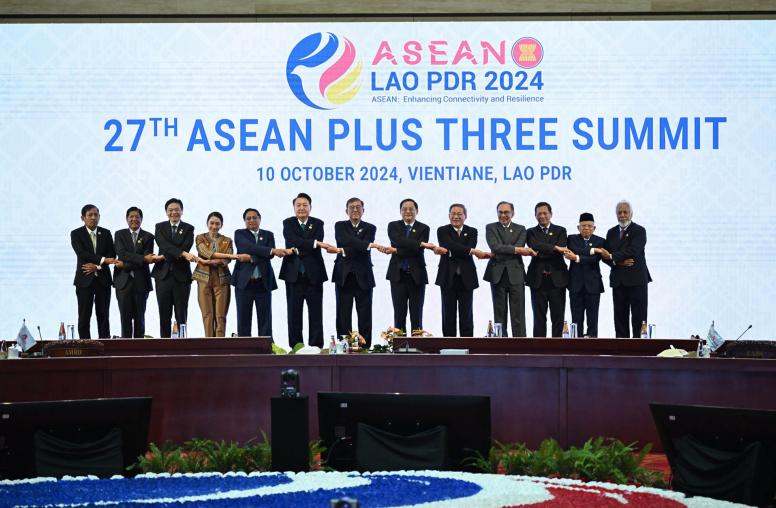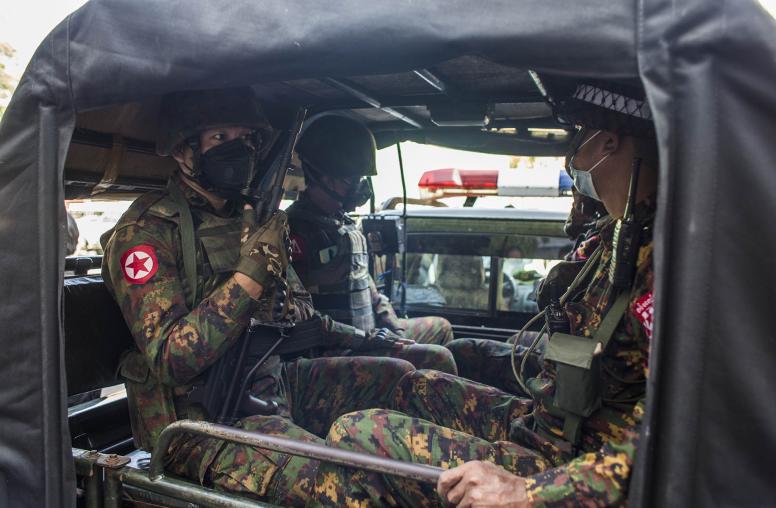Xi Jinping’s Visit to Myanmar: What Are the Implications?
The Chinese leader’s trip strengthened economic ties but left critical questions of internal conflict unaddressed.
From January 17-18, the general secretary of China’s Communist Party, Xi Jinping, travelled to Myanmar to promote bilateral ties and advance construction of the China-Myanmar Economic Corridor (CMEC). The visit saw the two sides commit to an ambitious economic agenda and building what China terms a “community of shared destiny.” The declarations of cooperation, however, failed to provide any clarity on how CMEC will address the countless questions and concerns that Myanmar has struggled with since its independence in 1948—issues likely to profoundly affect the two countries’ joint endeavors.

Xi’s visit came at a pivotal moment for Myanmar. Since catastrophic violence erupted in Rakhine state in 2017, the country’s domestic conflicts have hardened and become more explosive, peace-making initiatives have stalled, and Myanmar’s international isolation has deepened.
Over the past two years, both governments have sought to strengthen their bilateral political and economic ties. Myanmar depends on China to fuel its economic development and build much-needed infrastructure. It also looks to its northern neighbor for protection from international condemnation in the face of Gambia’s suit against Myanmar at the International Court of Justice; the International Criminal Court launching its own investigation of the country; and tightening economic sanctions imposed by Western capitals. China has also helped to support Myanmar’s peace process by bringing ethnic armed groups along the border to the negotiating table—something no other international stakeholder has managed to achieve.
Meanwhile, China’s southwestern provinces have dramatically increased their dependence on Myanmar with respect to energy security and trade. Since the early 1990s, state and private actors from China have invested hundreds of billions of dollars to build a massive network of gas pipelines, superhighways, industrial zones, and railroads connecting southwest China to the Indian Ocean through Myanmar. The introduction of the Belt and Road Initiative (BRI) in 2013 and the signing of a 2018 memorandum of understanding establishing the CMEC as a flagship component of the BRI have further deepened the two countries’ interdependence .
“Three Pillars” of CMEC
The day before he arrived in Naypyidaw, Xi published a letter in the Myanmar press titled “Writing a New Chapter of the 1,000-year-old History of Sino-Myanmar Friendship.” Calling for “concrete planning and implementation” of projects along the Corridor, Xi stressed the importance of progress on the “three pillars” of CMEC: the Kyaukphyu Special Economic Zone (SEZ), the China-Myanmar Border Economic Cooperation Zone, and New Yangon City Development—a massive new urban center roughly three times the size of Macau located in a flood-prone area adjacent to Yangon.
During the visit, Xi and Myanmar State Counsellor Aung San Suu Kyi witnessed the signing of key project documents relevant to all three of the CMEC pillars as part of a package of 33 cooperative arrangements between the two countries. These included a letter of intent for the New Yangon City project, a concession and shareholder’s agreement on the Special Economic Zone, and an agreement to accelerate negotiations on the cross-border zone between Ruili and Muse.
The English and Myanmar language versions of a joint statement released by the two countries reaffirmed Myanmar’s “firm commitment to the One China Policy” and support for “the efforts of China to resolve the issues of Taiwan, Tibet, and Xinjiang.”Notably, the Chinese language version was more aggressive, noting that Myanmar “recognizes Taiwan, Tibet and Xinjiang as inalienable parts of the People's Republic of China's territory.” For its part, China pledged to support Myanmar’s national sovereignty and dignity, while also signing significant agreements bolstering trade and development cooperation.
Armed Groups’ Objections
While the governments of Myanmar and China hailed the Xi visit as a tremendous success, many other key stakeholders issued statements expressing reservations. More than 50 civil society groups published an open letter to Xi, urging him to permanently cancel the controversial Myitsone Dam project. Construction of this mega-dam, located at the headwaters of the Irrawaddy River, was halted by the Myanmar government in 2011 after environmental, social and national security concerns sparked nationwide protests. They also called on China to follow international environmental, social and human rights standards; publicly provide information about CMEC contracts; and establish channels for meaningful consultation with the public.
Key political parties, including the Shan Nationalities League for Democracy, voiced similar perspectives, urging the CMEC to respect traditional land rights and demanding that all CMEC projects receive approval directly from communities in addition to the Union government.
Representatives of Myanmar’s ethnic armed groups voiced some of the most serious objections. The Arakan Army (AA), which has clashed more than 40 times with the Myanmar army in Rakhine state since the beginning of 2020, released a statement the day before Xi’s visit asserting that it would “recover land and resources taken from the Rakhine people … and wage a war for the liberation of the Rakhine nation.” The AA, an armed movement seeking autonomy for the more than 1.5 million ethnic Rakhine who make up the majority in Rakhine state, had previously been based in the China-Myanmar border area before launching attacks in Rakhine state in January of 2019. The AA has already gained a significant foothold in Rakhine state. The territories it aims to “recover” include the town of Kyaukphyu, which has been identified as the site for the key port facility that will serve CMEC.
Seeking Public Support
China’s leaders recognize that they need to do more to win broad-based support for their various initiatives, and they have placed greater emphasis on public relations. For example, in advance of Xi’s visit, the operator of the Sino-Myanmar Pipeline, the China National Petroleum Company, released a new “Corporate Social Responsibility” report, noting that it has delivered $500 million of benefits to Myanmar. And in his open letter last week, Xi stressed China’s commitment to projects that will improve the livelihood of the Myanmar people.
These may be steps in the right direction, but they do not answer fundamental questions raised by ethnic nationalities and civil society in Myanmar regarding revenue sharing, transparency and traditional land rights. Instead of racing ahead, key stakeholders in both countries should pause to consider how the two nations might work together to address these issues—and many others—that underlie Myanmar’s domestic conflicts.
Two possible initiatives stand out as potential solutions: In China, leaders have promised to greatly enhance transparency, accountability, and environmental sustainability of future BRI projects. Instruments such as the Beijing Initiative for the Clean Silk Road were released in April of 2019, but it remains unclear how these principles have been implemented on the ground in a BRI host country like Myanmar. Going forward, China can demonstrate its responsiveness to the needs of opposition parties, ethnic non-state authorities and civil society by making a good-faith attempt to fulfill the promises it made last year.
The Myanmar government, for its part, has made efforts to subject projects to a strict review process incorporating social and environmental impacts assessments. Dubbed the “Project Bank,” this plan has not yet been implemented, due largely to a lack of donor support. With the proper resources, political will and emphasis on how various projects might affect the causes of conflict, Myanmar’s government can respond more robustly to the needs of other stakeholders and renew efforts to build peace in the country.
Although Xi’s visit promoted rapid strides forward, both parties might be better served by taking a step back to ensure that a more robust and inclusive planning process leads to sustainable projects that help bring lasting peace to Myanmar. In Yunnan, a famous saying goes that the people of Myanmar and China drink from the same river. What both sides have yet to determine is how to share the water.
Jason Tower is the Myanmar country director at the U.S. Institute of Peace.



